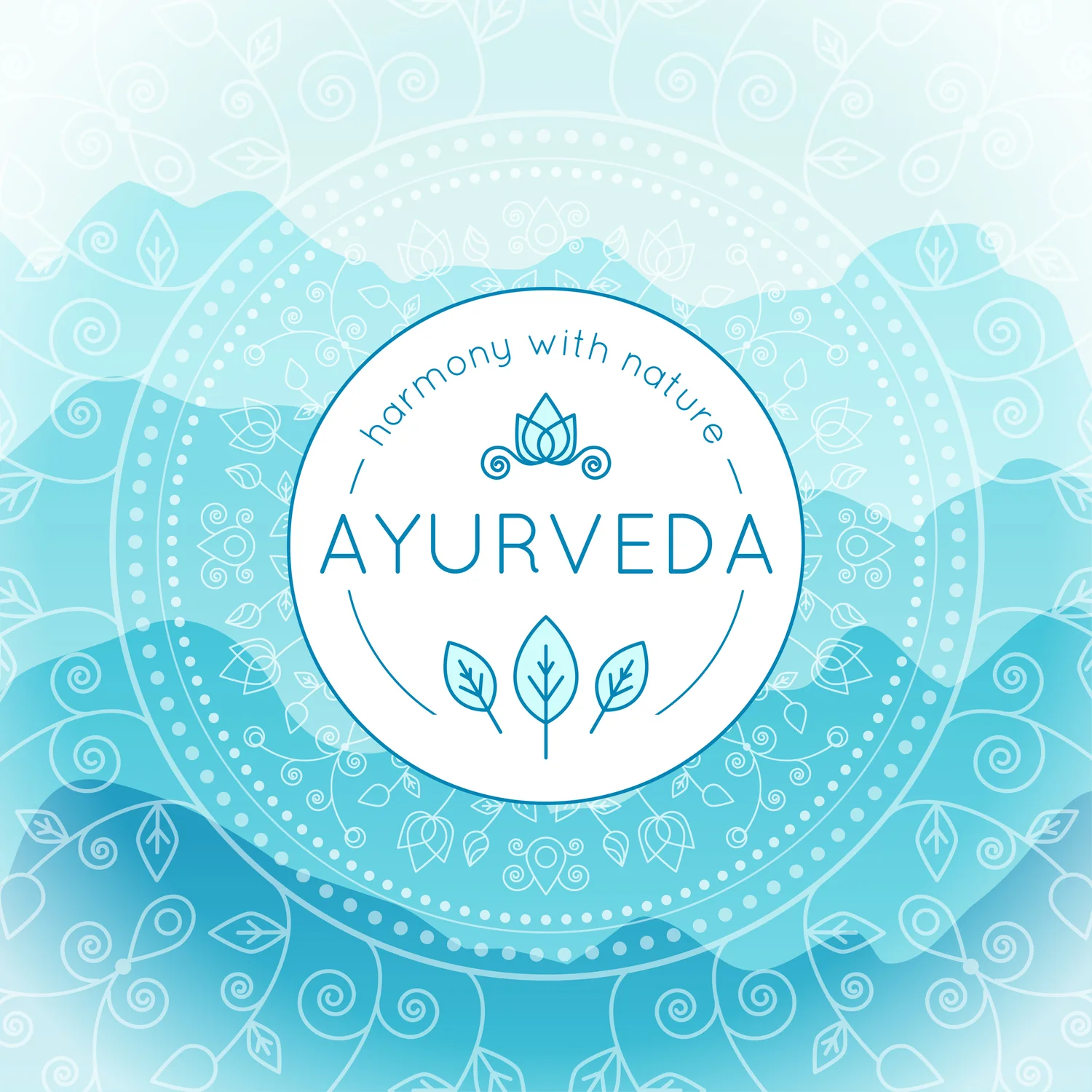Ayurveda and Dosha Balancing for Inner Harmony
Ayurveda is an ancient Indian system of holistic medicine that has been practiced for over 3,000 years[1]. The fundamental principle of Ayurveda is that health and wellness depend on a delicate balance between the mind, body, and spirit. According to Ayurveda, everyone has a unique mix of three doshas – vata, pitta, and kapha[1]. These doshas govern all biological, psychological, and physiological functions in the body and mind.
When the doshas are balanced, a person experiences health and inner harmony. However, an imbalance in the doshas leads to disease and discomfort[1]. Therefore, the key goal of Ayurveda is to identify each person’s unique dosha makeup and keep the doshas in balance through tailored lifestyle practices, diet, herbs, yoga, and cleansing techniques.
Mastering the foundations of Ayurveda and dosha balancing allows one to take control of their health and well-being.
The Three Doshas – Vata, Pitta, Kapha
Vata dosha is composed of the elements air and ether. It governs movement, including blood flow, respiration, nerve impulses, motions in the body, and thoughts in the mind[2]. Those with dominant vata tend to have light, thin builds, and dry skin, perform irregular daily functions, think quickly, and walk briskly.
Imbalanced vata manifests as anxiety, insomnia, constipation, abdominal bloating, variable digestion, fractures, arthritis, neurological disorders, and more[2]. To balance excess vata, get plenty of rest, eat warming foods at regular mealtimes, abhyanga (self-massage with oil), gentle yoga poses, and meditation.
Pitta dosha represents the elements of fire and water. It oversees digestion, absorption, assimilation, nutrition, metabolism, body temperature, skin coloration, the luster of the eyes, and intelligence[2]. People with predominantly pitta doshas have moderate builds, reddish hair and complexions, strong appetites, disciplined natures, and good comprehension.
Excess pitta leads to anger, inflammation, indigestion, peptic ulcers, excessive perspiration, heartburn, and inflammatory skin conditions like rashes or acne[2]. Cooling foods, avoidance of spicy/greasy foods, sweet fruits like mangoes, meditation, and swimming can help calm aggravated pitta.
The elements earth and water constitute kapha dosha, which handles growth, structure, lubrication, and stability in the mind-body system[2]. Those with dominant kapha have solid,
sturdy frames, excellent strength and endurance, cool skin, calm dispositions, and exceptional capability to heal from illness.
But imbalanced kapha manifests as obesity, respiratory congestion, high cholesterol, depression, edema, and stubborn cysts or growths[2]. Regular exercise, light fasting, warm food spices, and honey help restore harmony. Gaining a deeper grasp of doshic influences allows one to get at the root causes of health issues.

Discovering Your Unique Doshic Makeup
Ayurvedic wisdom highlights that every individual expresses all three doshas. However, the specific proportion of each dosha determines one’s prakriti (fundamental nature) and what factors influence the doshas to go out of alignment.
There are several prakriti categories depending on dominant doshas[3][4]:
- Vata prakriti
- Pitta prakriti
- Kapha prakriti
- Vata-Pitta prakriti
- Pitta-Kapha prakriti
- Vata-Kapha prakriti
- Vata-Pitta-Kapha prakriti (balanced doshas)
To determine your Prakriti, it is best to consult an Ayurvedic practitioner for a thorough assessment. However, here is a basic overview of common attributes for each Prakriti[3][4]:
Those with vata prakriti tend to have irregular daily routines, quick restless minds, insomnia, aversion to cold, constipation, cracking joints, anxiety, and slim bone structures.
Pitta-predominant individuals have focused precise concentration, reddish coloring, entrepreneurial zeal, disciplined habits, irritability when hungry, heartburn, and warm perspiration that smells acidic or sour.
Kapha Prakriti types possess dense strong builds, excellent stamina, methodical thinking, slow digestion, smooth lustrous skin, greed for fried or sweet foods, sinus congestion, and greediness for sentimentality.
Dual-doshic individuals embody a fusion of traits from their two dominant doshas. Lastly, perfect balance across all three doshas is extremely rare but indicates robust health, harmony, and vitality.
But Prakriti alone does not determine one’s current state of balance or imbalance. The lifestyle factors, diet, relationships, environment, and weather that alter one’s mind-body state
with respect to the doshas indicate one’s vikriti (current condition). For example, a vata-kapha prakriti person might suffer from excess vata during cold dry months but experience kapha accumulations in damp weather. Through assessment of both prakriti and vikriti, Ayurvedic experts provide specific recommendations to restore equilibrium.
Key Areas of Imbalance
While each doshic type faces vulnerabilities in certain organs and tissues, there are a few pivotal sites to assess imbalance. Paying attention to signals from these areas provides warnings to dosha aggravations before major complications develop in the rest of the body.
Digestion
In Ayurveda, poor digestion is the root cause of almost all illnesses, since undigested food material leaks toxic substances into circulation[5][6]. Signs of impaired digestion include indigestion, cramping, abnormal bowel movements, and low energy after eating. When food fails to properly transform into nutrition, toxins clog the subtler channels in the body and distort the mind.
Balancing digestion therapeutically builds Ojas to regenerate tissues, fortify immunity, stabilize metabolism, and nourish mental health[5][6]. Tridosic digestive teas or ‘digestives’ like fennel, cumin, coriander, and ginger harmonize digestion. Customizing food choices for one’s dosha enhances assimilation and prevents the buildup of excess dosha foods. Abhyanga and yoga massage the digestive tract and stimulate agni (digestive enzymes) to reignite metabolism.
Sleep
Sleep directly influences digestion, hormones, heart health, immunity, and psychological health. Yet over 50 million Americans suffer from occasional insomnia and 20 million have chronic sleep disorders[7]. This mass sleep disruption severely aggravates vata and makes recovery from pain, anxiety, and adrenal fatigue nearly impossible.
Prioritizing sleep hygiene balances doshas, resets circadian rhythms, reduces stress hormones, and repairs damage from oxidative stress. Vata individuals benefit from a warm heavy meal 3-4 hours before bedtime and self-massaging soothing oils on the head, and feet. Kapha types should avoid bedtime snacking, create total darkness, and keep the room cooler for optimal rest. Pitta people also rest calmly in cool, dark spaces and quiet their racing thoughts before sleep[5][6].
Stress Response
The modern chronic stress epidemic perpetuates inflammatory immune pathways and adrenal imbalance across all doshic types. But acute spikes in vata or pitta specifically damage
neuroendocrine communication channels. Excess vata triggers panic responses from low ojas while excess pitta sparks inflammatory reactions.
Practices like alternate nostril breathing, mindfulness, and yoga postures signal safety to the parasympathetic nervous system and mitigate fight-or-flight mechanisms[6]. These elicit relaxation by activating the vagus nerve, downregulating destructive stress hormones, defending the adrenal glands, and preventing sympathetic hyperactivity.
Employing antidotes specific to aggravated doshas also rebalances stress reactions. Vatas require slow-paced activity, Pittas need cooling-off periods, and Kaphas benefit from stimulating environments to counter excessive complacency[5].
Observing one’s unique stress response provides deeper insight about doshic imbalances. Stress often magnifies the pathological tendencies of each dosha and leads to more rapid health deterioration. Hence dosha balancing handles both preventing and reversing the damages of chronic stress.

Dosha Balancing Tools and Techniques
The integrated Ayurvedic approach utilizes diet, lifestyle, detoxification, yoga postures, breathing practices, and biorhythmic cycles to holistically harmonize doshas. But each branch concentrates on restoring certain core physiological structures.
Ahara – Nutrition and Digestion
Hippocrates rightly proclaimed, “Let food be thy medicine and medicine be thy food.” Ayurveda contains extensive details on how to match diets with each constitution to strengthen digestion and prevent the formation of toxins.
For example, sweet, salty, and sour warming foods pacify vata while cool, dry foods exacerbate vata and increase painful cracking pressure. Kaphas thrive on light, drying, spicy hot foods but suffer congestion from cold, oily, heavy foods[10]. Pittas flourish with sweet, bitter, astringent foods and balanced spices but suffer burning acidic indigestion from greasy fried foods, alcohol, and chili peppers.
Recommendations also adjust for seasons, geography, budget, taste preferences, and stage of life to ensure sustainable adoption[10]. Beyond the extensive food guidelines, proper eating rhythms reign supreme. Ayurveda advises the largest meal at noon when digestion is strongest, then a light easily digestible dinner. Skipping meals frequently aggravates vata while binge eating and untimely snacks disturb pitta-kapha.
Herbal digestives like trikatu, hingvashtak, avipattikar, and chitrak help recalibrate digestive strength regardless of constitution. Optimizing digestion enables healthy tissue formation, augments natural immunity, and prevents the accumulation of toxins[10].
Vihara – Lifestyle Routines
The merciless intensity of modern technology severely disrupts natural biorhythms governed by doshas – deep restful sleep at night, alert wakefulness during daylight, hunger cycling with physical activity, and intimacy coinciding with peak creative energy[11].
Vihara reestablishes physiological order amidst the chaos through dinacarya (daily routines) and ratricarya (nighttime rituals). These routines anchor vata anxiety swings, cool pitta intensity, and stimulate kapha inertia.
Key introductory steps include tranquility meditation, self-massage before bathing, drying herbs like triphala Eyewash, and nasya oil to clear nasal/sinus congestion, and slow yoga to align structural balance.
Night routines involve mindfulness during dinner, embodiment mantra meditation, and sleep preparation with aromatherapy. These calm the adrenals, and neuroendocrine pathways, balance melatonin secretion, and enhance the parasympathetic relaxation response before sleep[11].
Over time, vihara stabilizes biological pathways disrupted by dosha irregularities[11]. Grounding lifestyle rhythms generates the foundations to pursue sadhana (spiritual purpose), financial goals, intimacy needs, and creative actualization.
Panchakarma – Purification and Rejuvenation
Poor lifestyle choices and undigested experiences often accumulate deep-rooted toxins over years despite symptoms seeming minor initially. Panchakarma employs advanced detoxification and purification practices to reset the structural balance and free stuck doshas[12].
The intensive initial purification phase clears ama (toxic byproducts) through emesis, purgatives, enemas, and nasal therapies. Secondly, rejuvenating tonics like rasayanas and vajikaranas regenerate and strengthen new tissue formation. These specialized karmas along with post-panchakarma dietary guidelines dramatically amplify and sustain benefits from dosha lifestyle modification.
Though the modalities seem esoteric, they operate through elegant biochemistry principles to remove lipid-soluble toxins and strengthen the body’s innate self-repair mechanisms[12].
Marmabhyanga and Svedana – Medicated Oil Massage
Marmabhyanga involves Ayurvedic internal organ massage with medicated herbal oils heated to penetrate deep tissue blockages[13][14]. The practitioner skillfully applies firm pressure to marma points – vital intersections of pulse, nerves, blood vessels, ligaments, and organs.
This deep detox technique channels stuck doshas, liquefies toxic accumulations, reduces pain, and harmonizes key pathways. Customized for each dosha and site of imbalance, it effectively restores structural alignment, neuroendocrine communication, and metabolic regulation.
Svedana (sweat therapy) utilizes steam from Ayurvedic decoctions to open circulation, clear obstructions, and enhance toxin drainage[14]. Herbs like ginger, tulsi, and cardamom heat open channels blocked by cold vata, burn away excess pitta, and melt thick kapha deposits.
It cleanses much deeper than external blood circulation as steam carries medicinal qualities deep into collar bones, lymphatic systems, joints, periphery nerves, and cellular communication networks blocked by years of scar tissue. Hence svedana comprehensively restores harmony at every level of physiology when guided properly[13][14].
Ayurvedic massage technique that involves the application of gentle pressure to specific energy points known as “marma points” on the body.
Benefits of Balanced Doshas
Skillful balancing of vata, pitta, and kapha doshas without excessive suppression restores inner harmony and directly translates to physical and mental well-being. Beyond the absence of overt disease, key benefits include[7][8][9][15]:
Effortless Weight Optimization
When digestion strengthens and nutritional assimilation properly converts food to energy and plasma, the body gracefully stabilizes at one’s optimal functional weight without conscious calorie counting. Nourishing tastes satisfy the senses while proper protein fuels lean muscle development and ojas support stored energy reserves in the adipose tissue.
Emotional Stability
Mental disturbances like anxiety, anger, attachment, and grief all trace downstream to current or past digestive toxin formation. As balanced nutrition nourishes the mind properly, clarity surfaces to metabolize destructive emotional patterns into sources of personal growth and spiritual meaning. One cultivates the calm witnessing awareness to handle external stressors and internal mental loops without exaggerated reactivity.
Restful Regenerative Sleep
Disturbed sleep fails to properly rest the body, repair tissue damage, regulate hormones, and detoxify the brain. As digestion strengthens and burning inflammatory reactions calm down through dosha harmony, Circulating toxins stop bombarding the nervous system.
Balance enables full movement through the fundamental rest and activity cycles. The nervous system feels fully secure to completely deactivate fight-or-flight responses during deep nourishing sleep. Waking states become vibrant and effortless.
Enhanced Spiritual Receptivity
When the constant burden of disease, discomfort, and disturbed digestion ceases overindulging the self-preservation focus of primal survival circuits, higher brain centers open perception to subtler realms. Inner stillness and compassion towards the outer world blossom naturally.
One’s spiritual journey accelerates towards deeper meaning and self-realization. Beyond transient personal health, collective upliftment becomes an intuitive priority.
Ultimately ayurvedic wisdom shines light on our inner universe’s remarkable self-regulating intelligence. Simple balanced inputs of lifestyle, nutrition, and connectedness unleash the body’s extraordinary drive toward wholeness. Dosha evaluation and balancing empower one to transcend from depleted suffering into abundant well-being.
References:
[1] Jaiswal, Yogini S., and Leonard L. Williams. “A glimpse of Ayurveda–The forgotten history and principles of Indian traditional medicine.” Journal of traditional and complementary medicine 7.1 (2017): 50-53.
[2] Kumar, R., and N. R. Sharma. “ROLE OF TRIDOSHA (VATA, PITTA AND KAPPHA) IN SOCIAL WELL-BEING OF OLDER ADULTS.” (2021).
[3] Dey, Subhojit, and Parika Pahwa. “Prakriti and its associations with metabolism, chronic diseases, and genotypes: Possibilities of new born screening and a lifetime of personalized prevention.” Journal of Ayurveda and integrative medicine vol. 5,1 (2014): 15-24. doi:10.4103/0975-9476.128848
[4] Rhoda, Daniel. “Ayurvedic psychology: Ancient wisdom meets modern science.” International Journal of Transpersonal Studies 33.1 (2014): 14.
[5] Hankey, Alex. “Ayurvedic physiology and etiology: Ayurvedo Amritanaam. The doshas and their functioning in terms of contemporary biology and physical chemistry.” The Journal of Alternative & Complementary Medicine 7.5 (2001): 567-574.
[6] Gokani, Trupti. “A yurveda–The Science of Healing.” Headache: The Journal of Head and Face Pain 54.6 (2014): 1103-1106.
[7] Colten, Harvey R., et al. “Extent and Health Consequences of Chronic Sleep Loss and Sleep Disorders.” Nih.gov, National Academies Press (US), 2023,
www.ncbi.nlm.nih.gov/books/NBK19961/.
[8] Rathore, Hiteshpal Singh. “Yoga for balancing the doshas.” International Journal of Yogic, Human Movement and Sports Sciences, 4 (1) (2019): 1385-1387.
[9] Kaur, Ravneet. “Role of Rasaushadhies in Balancing Doshas wsr to Muscular Disorders.”
[10] Sabnis, Mukund. “Viruddha Ahara: A critical view.” AYU (An international quarterly journal of research in Ayurveda) 33.3 (2012): 332-336.
[11] Sardar, Sazu, et al. “Factors affecting visitor’s satisfaction: an empirical study on the Paharpur Buddha Vihara, Naogaon, Rajshahi.” Int. J. Manag. Account 2.4 (2020): 61-73. [12] Conboy, L. A., Ingrid Edshteyn, and Hilary Garivaltis. “Ayurveda and Panchakarma:
measuring the effects of a holistic health intervention.” The Scientific World Journal 9 (2009): 272-280.
[13] Nishteswar, K.. “Science of Marma (in Ayurvedic diagnosis and treatment).” Ayu vol. 36,1 (2015): 113–114.
[14] Rastogi, Sanjeev, and Francesco Chiappelli. “Hemodynamic effects of Sarvanga Swedana (Ayurvedic passive heat therapy): A pilot observational study.” Ayu vol. 34,2 (2013): 154-9. doi:10.4103/0974-8520.119669
[15] Shilpa, S, and C G Venkatesha Murthy. “Understanding personality from Ayurvedic perspective for psychological assessment: A case.” Ayu vol. 32,1 (2011): 12-9. doi:10.4103/0974-8520.85716







